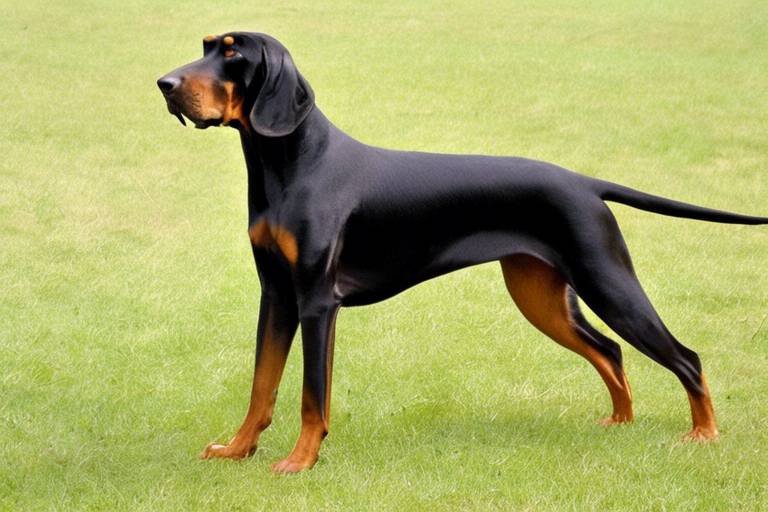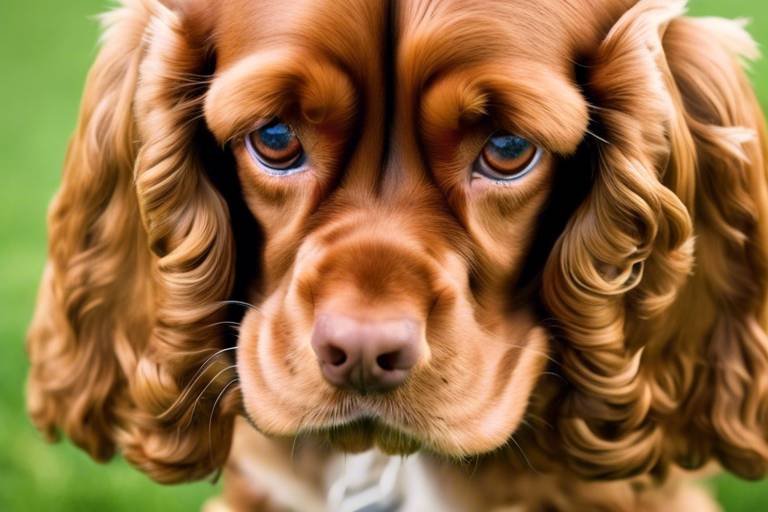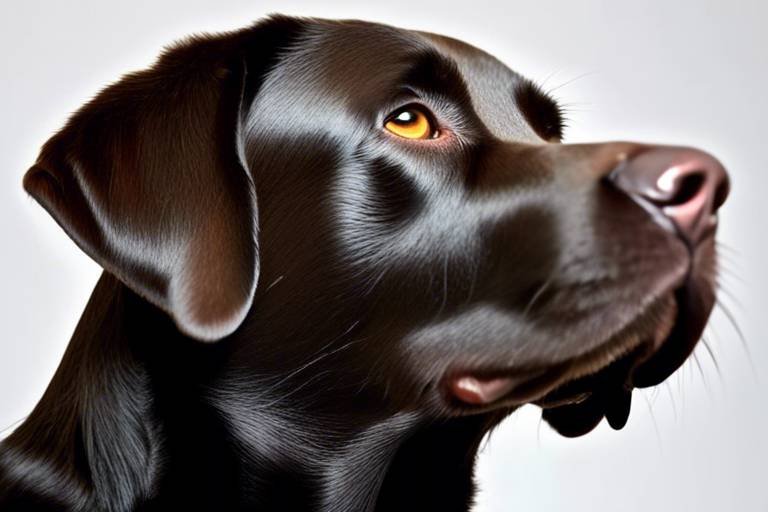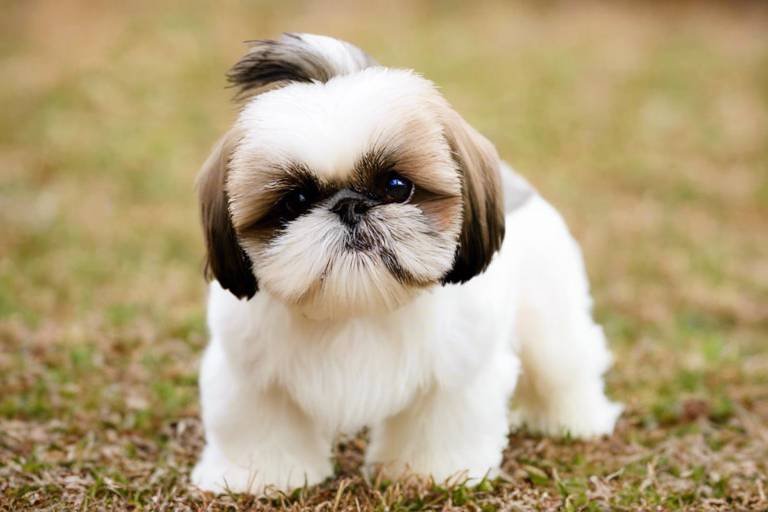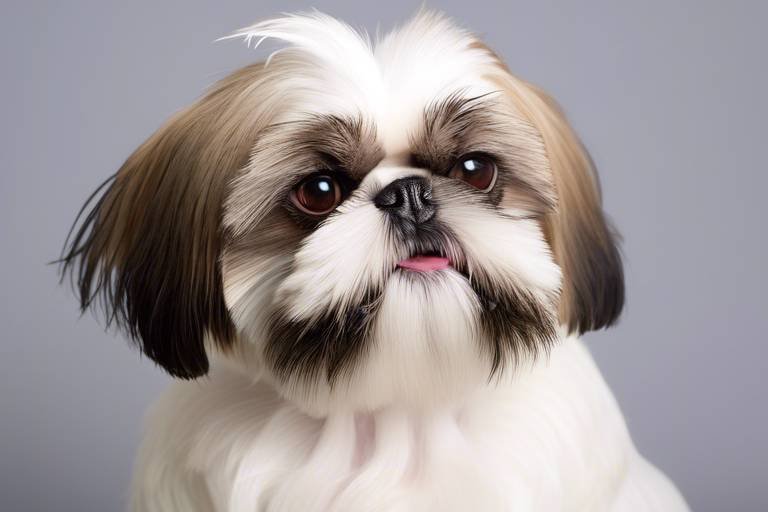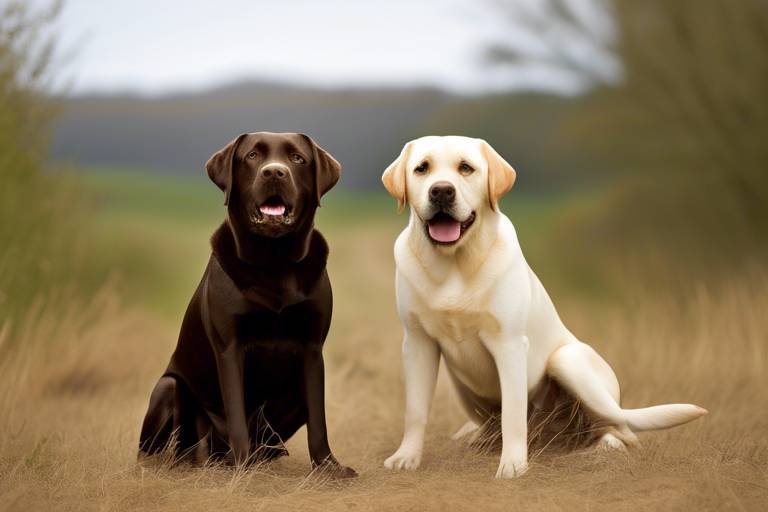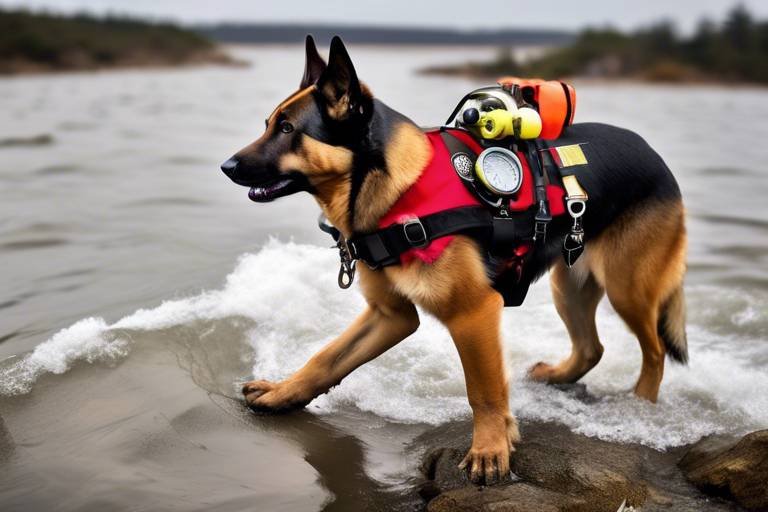The Characteristics of the Black and Tan Coonhound
The Black and Tan Coonhound is a remarkable breed that stands out not only for its striking appearance but also for its rich history and exceptional traits. Originating from the United States, this breed was developed primarily for hunting purposes, showcasing a blend of strength, stamina, and a keen sense of smell. With their friendly demeanor and loyal nature, Black and Tan Coonhounds have won the hearts of many families, making them a popular choice for both hunting enthusiasts and pet owners alike.
One of the most notable characteristics of the Black and Tan Coonhound is its impressive physical appearance. They typically weigh between 65 to 100 pounds and stand around 21 to 27 inches tall at the shoulder. Their coat is a beautiful combination of black and tan, with a shiny, short-haired texture that makes them look sleek and elegant. The breed's long ears and droopy eyes give them a distinctive look that many find endearing. These features not only add to their charm but also serve practical purposes in their hunting roles, helping to trap scents effectively.
But it’s not just their looks that make them special. The Black and Tan Coonhound is renowned for its intelligent and friendly temperament. They are incredibly sociable dogs, often described as gentle giants. Their loyalty to their families is unwavering, and they tend to get along well with children and other pets. This breed thrives on companionship, making them excellent family dogs. However, potential owners should be aware that their friendly nature also means they require ample social interaction and mental stimulation to keep them happy and healthy.
In summary, the Black and Tan Coonhound is a breed that embodies strength, beauty, and a loving disposition. Their unique combination of physical traits and temperament makes them a delightful addition to any household. As we delve deeper into this article, we will explore their physical appearance, temperament, health considerations, exercise needs, and more, providing a comprehensive guide for anyone interested in this wonderful breed.
- What is the average lifespan of a Black and Tan Coonhound? The average lifespan is around 10 to 12 years.
- Are Black and Tan Coonhounds good with children? Yes, they are known for their patience and playfulness with kids.
- Do they require a lot of exercise? Yes, they are energetic dogs that need regular exercise to stay healthy.
- How often should they be groomed? Their short coat requires minimal grooming, but regular brushing is recommended to reduce shedding.
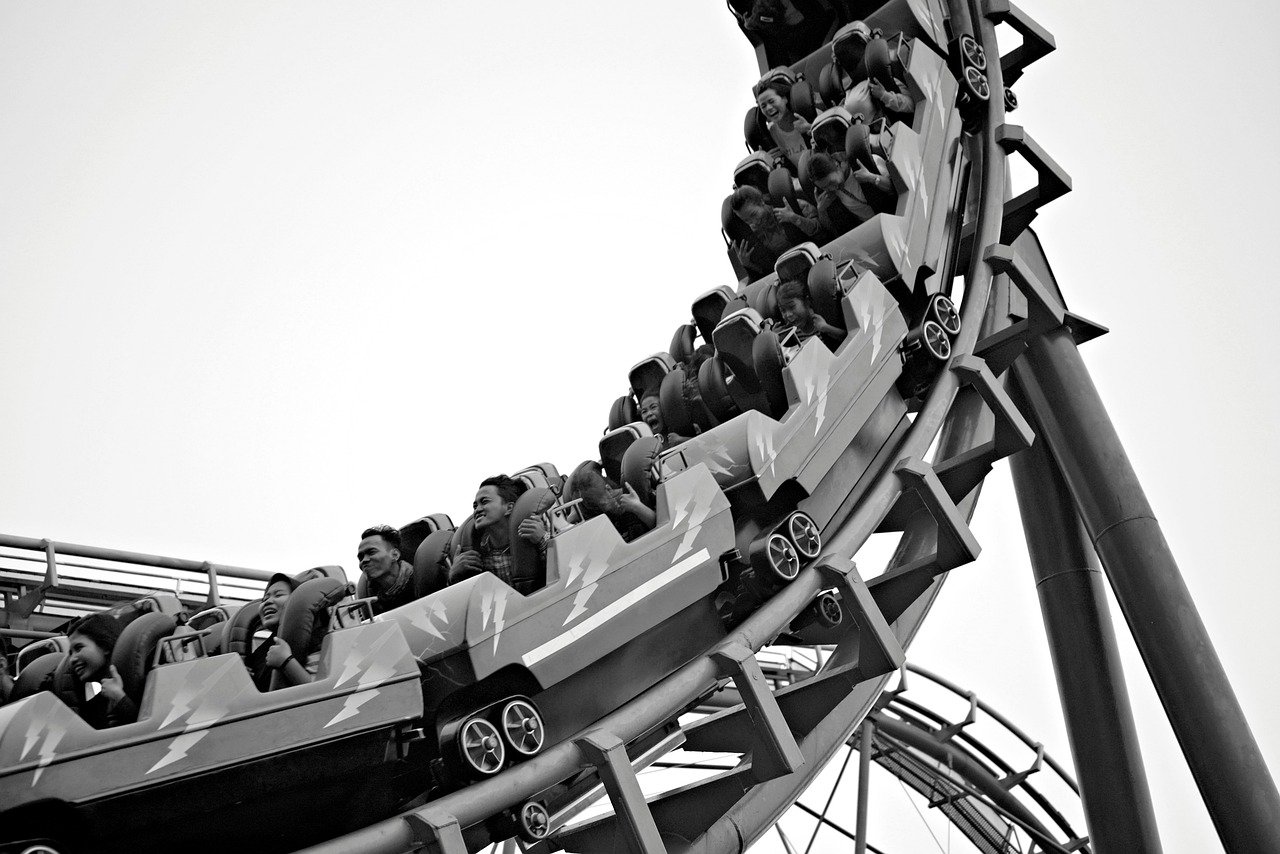
Physical Appearance
The Black and Tan Coonhound is a breed that truly stands out in a crowd, thanks to its impressive size and striking coat. Typically, these dogs are large, with males weighing between 65 to 110 pounds and females ranging from 50 to 85 pounds. Their height usually falls between 21 to 27 inches at the shoulder. This robust build is not just for show; it reflects their history as hunting dogs, designed to traverse rugged terrain in pursuit of game.
One of the most distinctive features of the Black and Tan Coonhound is its coat. The breed sports a short, dense, and weather-resistant coat that is predominantly black with rich tan markings. These tan markings are usually found on the legs, face, and chest, creating a beautiful contrast that highlights their muscular structure. The combination of these colors not only adds to their aesthetic appeal but also serves a practical purpose, helping them blend into various environments while hunting.
Another noteworthy characteristic is their large, droopy ears, which are not just adorable but also functional. These ears help trap scents, enhancing their already impressive olfactory abilities. Their expressive eyes, which can range from dark brown to hazel, are set deep and carry a gentle yet intelligent gaze that reflects their friendly nature. The overall look of the Black and Tan Coonhound is one of strength and grace, making them an appealing choice for dog lovers.
In terms of grooming, the Black and Tan Coonhound is relatively low-maintenance. Their short coat requires minimal brushing, typically just once a week, to remove loose hair and keep it looking sleek. However, attention should be given to their ears; regular cleaning is essential to prevent infections, given their propensity for ear issues. Keeping their nails trimmed and teeth clean is also important for their overall health.
In summary, the physical appearance of the Black and Tan Coonhound is a blend of beauty and functionality. Their size, coat, and distinctive features make them easily recognizable, while their health and grooming needs are manageable for most owners. If you're considering adding this breed to your family, you can expect a striking companion that is both elegant and robust.
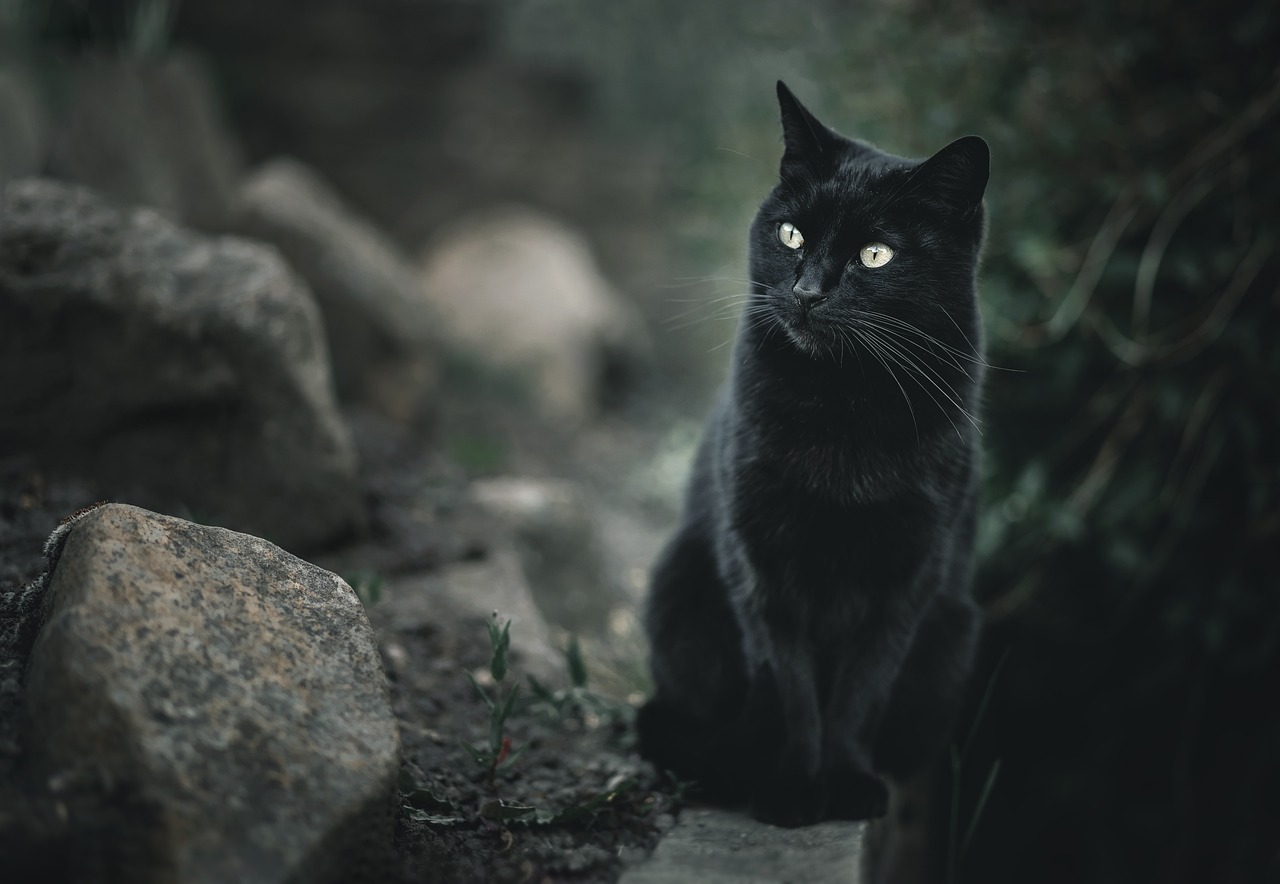
Temperament
The Black and Tan Coonhound is a breed that embodies a delightful mix of friendliness and loyalty, making them a fantastic addition to any family. Known for their gentle disposition, these dogs are not just about hunting; they thrive on companionship and social interaction. If you're considering welcoming one into your home, it's crucial to understand their temperament, as it plays a significant role in how they will fit into your lifestyle.
One of the standout traits of the Black and Tan Coonhound is their affectionate nature. They are incredibly loving towards their families and often form strong bonds with each member. Imagine coming home after a long day; your Coonhound greets you with a wagging tail and a joyful bark, as if to say, "I've been waiting for you!" This breed is known to be quite sociable, so they generally get along well with children and other pets, which makes them an ideal choice for families.
When it comes to social behavior, Black and Tan Coonhounds are like that friend who can easily blend into any crowd. They are typically easygoing and adapt well to different environments, whether it's a bustling park or a cozy home. Their friendly demeanor makes them approachable, and they often enjoy meeting new people and dogs during walks or outings. However, it's essential to socialize them early on to ensure they develop into well-rounded adults.
Black and Tan Coonhounds have a natural affinity for children. Their patience and playfulness shine through in their interactions, making them excellent companions for kids. They tend to be gentle and protective, often acting as the guardians of the little ones. It's not uncommon to see a Coonhound lying down while a child plays around them, showcasing their calm and tolerant nature. However, supervision is always recommended, as with any breed, to ensure safe playtime.
In terms of compatibility with other animals, the Black and Tan Coonhound is generally friendly and can coexist peacefully with other pets. They have a strong prey drive, so early socialization is key to teaching them how to interact appropriately with smaller animals. With proper training, these dogs can learn to live harmoniously with cats, rabbits, and other household pets. Just like a well-choreographed dance, it takes practice and patience to get everyone moving in sync!
In summary, the Black and Tan Coonhound is a breed characterized by its friendly nature, loyalty, and sociable behavior. They are not just hunting dogs; they are loving companions that can bring joy and warmth to any home. Understanding their temperament is essential for any potential owner, as it can significantly impact the dynamics of your household.
- Are Black and Tan Coonhounds good with children?
Yes, they are known for their patience and playfulness, making them excellent companions for kids. - Do Black and Tan Coonhounds get along with other pets?
Generally, they are friendly and can coexist with other animals, but early socialization is crucial. - How much exercise do Black and Tan Coonhounds need?
This breed requires regular exercise to stay healthy and happy, including daily walks and playtime. - Are Black and Tan Coonhounds easy to train?
They are intelligent but can be independent, so consistent training methods are necessary for success.
Social Behavior
The Black and Tan Coonhound is not just a hunting dog; it’s a social butterfly in the canine world! These dogs are known for their friendly and outgoing nature, making them excellent companions for families and individuals alike. They thrive on interaction and are often seen wagging their tails and greeting everyone they meet with enthusiasm. This breed's sociability stems from their history as pack hunters, where teamwork and communication were essential for success. So, if you're looking for a dog that will happily join you on adventures and make friends at the dog park, the Black and Tan Coonhound is a fantastic choice.
One of the most remarkable aspects of their social behavior is their adaptability to various environments. Whether it’s a bustling household with children, a quiet apartment, or a spacious backyard, these dogs can adjust to their surroundings. They have a natural ability to read social cues, which helps them navigate different situations with ease. For instance, when meeting new people or other pets, they often display a calm demeanor, allowing them to integrate smoothly into any social setting.
In addition to their friendly disposition, Black and Tan Coonhounds are known for their playful antics. They love to engage in games and activities with their human companions. This playful nature not only strengthens the bond between the dog and its owner but also provides essential mental and physical stimulation. Their playful behavior can be seen in various ways, such as:
- Chasing after balls or frisbees
- Engaging in tug-of-war games
- Participating in agility training
Another noteworthy trait of the Black and Tan Coonhound is their ability to get along with other dogs. They are generally non-aggressive and often enjoy the company of their peers. In fact, their sociable nature makes them ideal candidates for playdates or trips to the dog park. However, as with any breed, early socialization is crucial. Exposing them to different dogs, environments, and experiences while they are young will help them develop into well-rounded adults.
When it comes to social interactions with humans, these dogs are incredibly affectionate. They love to be part of the family and often seek out attention and affection from their owners. This bond is especially strong when they are raised in a loving environment, as they tend to form deep attachments to their families. Their loyalty and love can be seen in the way they follow their owners around the house or snuggle up next to them on the couch.
In summary, the Black and Tan Coonhound's social behavior is characterized by their friendly demeanor, adaptability, and playfulness. They thrive on interaction with people and other animals, making them excellent companions for those who enjoy an active and social lifestyle. Remember, investing time in socialization and training will ensure that your Black and Tan Coonhound becomes a well-adjusted and happy member of your family.
- Are Black and Tan Coonhounds good with children? Yes, they are known for their patience and playfulness, making them excellent family companions.
- Do they get along with other pets? Generally, yes! They are sociable and can coexist well with other dogs and pets.
- How much exercise do they need? Black and Tan Coonhounds require regular exercise, including walks, playtime, and mental stimulation.
Interaction with Children
The Black and Tan Coonhound is a breed that truly shines when it comes to interacting with children. Their gentle nature and playful spirit make them fantastic companions for kids of all ages. Imagine a dog that not only enjoys running around but also has a natural instinct to protect and watch over the little ones. This breed embodies that perfect blend of energy and affection, making them an ideal family pet.
These dogs are known for their patience and playfulness. They can often be seen joining in on games of tag or fetch, happily bounding alongside children as they laugh and play. One of the most heartwarming sights is a Black and Tan Coonhound lying down while a child uses them as a pillow or drapes a blanket over them. They seem to understand that their size and strength can be a source of comfort for kids, making them a wonderful addition to any family.
However, it's essential to teach children how to interact with dogs respectfully. While Black and Tan Coonhounds are generally tolerant, they still deserve to be treated with kindness. Here are a few tips to ensure a harmonious relationship between your Coonhound and your children:
- Supervise Play: Always supervise interactions to ensure both the dog and child are safe and comfortable.
- Teach Gentle Touch: Educate children on how to pet and handle the dog gently to avoid any accidental injuries.
- Encourage Sharing: Teach kids to share toys and treats with the dog, fostering a bond of trust and love.
Moreover, Black and Tan Coonhounds are known for their adaptability. Whether you're in a bustling household or a quiet home, they can adjust to various environments, making them suitable for families living in different settings. Their friendly demeanor allows them to interact well not just with children, but with guests and other pets, creating a warm and inviting atmosphere in your home.
In conclusion, the Black and Tan Coonhound's interaction with children is a testament to their loving and loyal nature. They thrive in family settings and are always ready for a new adventure, whether it’s a game of fetch in the backyard or a cozy cuddle on the couch. By fostering a respectful relationship between your Coonhound and your children, you’ll ensure a lifetime of joyful memories and companionship.
Here are some common questions about the interaction between Black and Tan Coonhounds and children:
- Are Black and Tan Coonhounds good with young children?
Yes, they are generally very gentle and patient, making them great companions for young kids. - How should I introduce my Coonhound to my children?
Start by allowing them to meet in a calm environment, ensuring both the dog and the children feel safe. - Can Black and Tan Coonhounds be left alone with children?
While they are friendly, it’s best to supervise their interactions to prevent any accidents.
Compatibility with Other Pets
The Black and Tan Coonhound is often celebrated for its friendly demeanor and sociable nature, making it a fantastic companion not just for humans but also for other pets. If you’re considering bringing a Black and Tan Coonhound into a home that already has other animals, you’re in for a treat! These dogs generally exhibit a gentle disposition and are known to adapt well to various living situations. Their innate friendliness means they typically get along with other dogs, and they can even coexist peacefully with cats and smaller animals, given the right introductions and supervision.
One of the key factors in ensuring successful interactions between a Black and Tan Coonhound and other pets is early socialization. Exposing your Coonhound to different animals from a young age can foster a sense of familiarity and reduce any potential territorial instincts. It’s essential to remember that while these dogs are generally friendly, they do have a strong prey drive, which is a remnant of their hunting background. Therefore, supervised interactions are crucial, especially during the initial meetings. A gradual introduction can help ease any anxiety and allow all pets to feel comfortable in each other’s presence.
When considering compatibility, it’s also important to recognize the individual personalities of both your Coonhound and other pets. Some dogs may be more dominant or assertive, while others may be more submissive. Here’s a quick breakdown of how Black and Tan Coonhounds typically interact with other types of pets:
| Type of Pet | Compatibility Level | Notes |
|---|---|---|
| Dogs | High | Social and playful; enjoys companionship. |
| Cats | Moderate | Can coexist if introduced properly; monitor interactions. |
| Small Animals (e.g., rabbits, hamsters) | Low to Moderate | Supervision required; strong prey drive may pose risks. |
In conclusion, the Black and Tan Coonhound’s adaptable nature makes it a suitable candidate for families with other pets. With proper training, socialization, and supervision, these dogs can thrive in multi-pet households, bringing joy and companionship to all members of the family—both human and furry alike. Remember, patience and understanding go a long way in nurturing harmonious relationships among pets, and the rewards of a happy, integrated household are well worth the effort!
- Are Black and Tan Coonhounds good with children? Yes, they are generally very patient and playful with kids, making them excellent family pets.
- How should I introduce my Coonhound to other pets? Gradual introductions in a controlled environment are recommended to ensure comfort and safety for all animals involved.
- Can Black and Tan Coonhounds live with cats? Yes, but it depends on the individual dog's temperament and the cat's behavior; supervision is essential.
- What should I do if my Coonhound shows aggression towards other pets? Consult a professional trainer or behaviorist to address the issue and ensure safe interactions.
Training and Intelligence
The Black and Tan Coonhound is not just a pretty face with its stunning coat and charming demeanor; it also possesses a remarkable level of intelligence. However, this intelligence comes with a twist. You see, while they are smart and eager to learn, they also have an independent streak that can make training a bit of a challenge. Imagine trying to teach a teenager who thinks they know everything! But don't worry; with the right approach, you can turn this challenge into a rewarding experience.
When it comes to training a Black and Tan Coonhound, consistency is key. These dogs thrive on routine, so establishing a structured training schedule will help them understand what is expected of them. Positive reinforcement techniques work wonders—think treats, praise, and lots of belly rubs! After all, who doesn’t love a good reward? Incorporating fun into training sessions can keep your Coonhound engaged. Consider using games or challenges that stimulate their hunting instincts, as this breed was originally bred for tracking and hunting.
One effective training method is the clicker training technique. This involves using a small device that makes a clicking sound to mark the desired behavior, followed by a reward. This method can be particularly effective for Black and Tan Coonhounds since they respond well to sound cues. Just remember, patience is your best friend. They may take their time to grasp new commands, but with persistence, they will get there.
Socialization is another critical aspect of training for this breed. Exposing your Black and Tan Coonhound to various environments, people, and other animals can help them develop into well-rounded companions. Start socialization early, as a puppy, and continue throughout their life. This exposure will not only help them become more adaptable but will also enhance their confidence, which is essential for a breed known for its hunting background.
Here’s a quick overview of some effective training tips for Black and Tan Coonhounds:
- Be Consistent: Use the same commands and rewards to avoid confusion.
- Make it Fun: Incorporate games that align with their natural instincts.
- Use Positive Reinforcement: Reward good behavior with treats and praise.
- Socialize Early: Expose them to different environments and situations.
- Be Patient: Understand that they may take time to learn new commands.
In conclusion, training a Black and Tan Coonhound can be a delightful journey filled with laughter and learning. By employing the right techniques and maintaining a positive outlook, you can cultivate a strong bond with your furry friend, ensuring they grow into a well-behaved and loyal companion.
Q: How long does it take to train a Black and Tan Coonhound?
A: Training duration varies by individual dog, but with consistent practice, you can see progress within a few weeks to a few months.
Q: Are Black and Tan Coonhounds easy to train?
A: They can be a bit challenging due to their independent nature, but with the right methods, they can learn effectively.
Q: What is the best age to start training a Black and Tan Coonhound?
A: It's best to start training and socialization as early as possible, ideally when they are puppies.
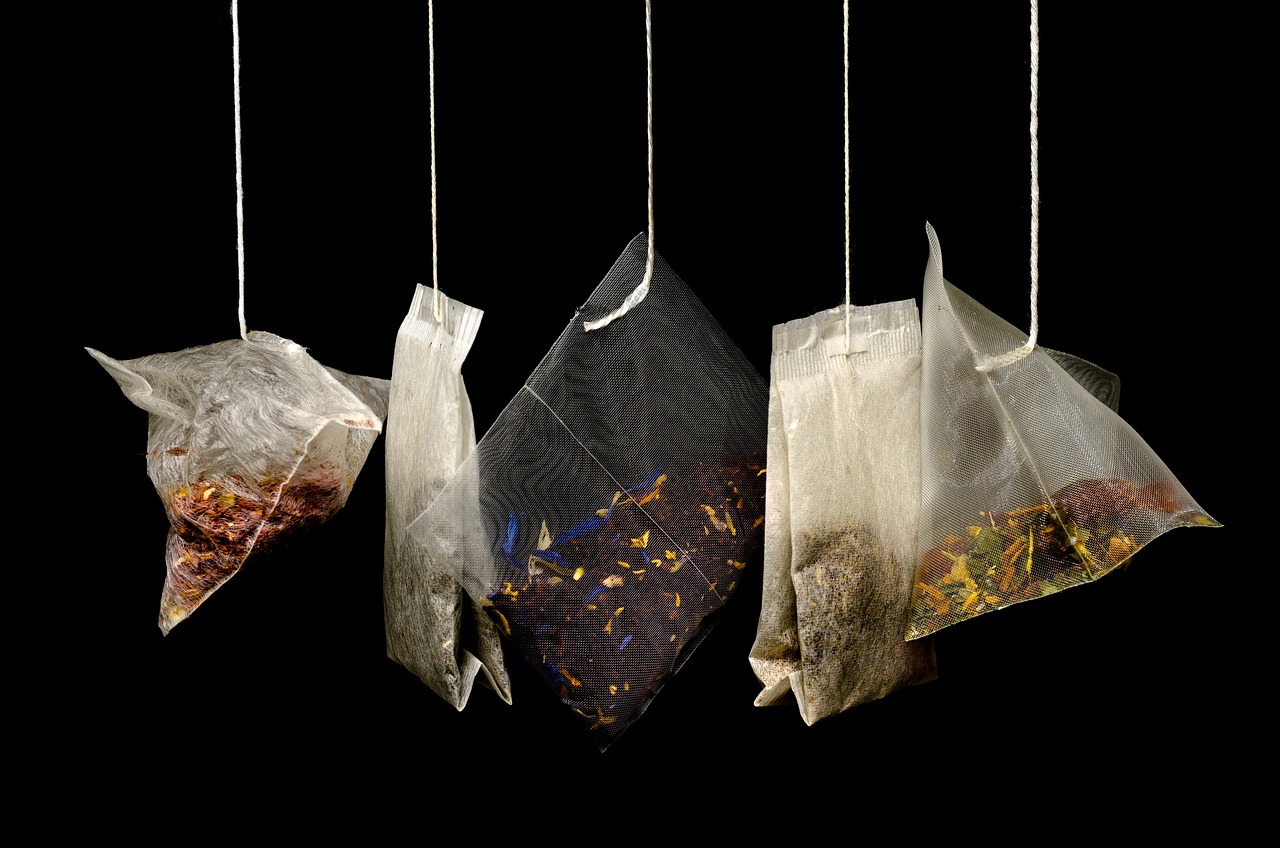
Health Considerations
When it comes to owning a Black and Tan Coonhound, understanding their health considerations is paramount. Just like any other breed, they come with their own set of health challenges that every potential owner should be aware of. These dogs are generally robust and energetic, but they are also susceptible to certain health issues that can affect their quality of life. Being proactive about their health can lead to a longer, happier life for your furry friend. So, what should you look out for?
One of the most common health concerns for Black and Tan Coonhounds is hip dysplasia. This condition occurs when the hip joint doesn't fit snugly into the hip socket, leading to arthritis and pain as the dog ages. It’s essential to recognize the early signs, which may include a reluctance to jump or run and a noticeable decrease in activity levels. Regular vet check-ups can help catch these issues before they escalate.
Another prevalent issue is ear infections. Given their floppy ears, Black and Tan Coonhounds are particularly prone to moisture buildup, which can lead to infections. It's crucial for owners to regularly check their dogs' ears and keep them clean and dry. If you notice any unusual odor or discharge, a trip to the vet is in order. Preventive care, such as cleaning their ears at home, can go a long way in avoiding these infections.
Additionally, obesity can be a concern for this breed. With their love for food and a sometimes laid-back attitude, it’s easy for them to pack on the pounds. Obesity can lead to a myriad of health issues, including diabetes and joint problems. Keeping an eye on their diet and ensuring they get enough exercise is vital. A balanced diet tailored to their age, weight, and activity level will help maintain their health.
To help you better understand the common health issues faced by Black and Tan Coonhounds, here’s a quick overview:
| Health Issue | Description | Signs to Watch For |
|---|---|---|
| Hip Dysplasia | Improper formation of the hip joint | Reluctance to jump, decreased activity |
| Ear Infections | Infections due to moisture in floppy ears | Unusual odor, discharge, scratching at ears |
| Obesity | Excess weight leading to various health issues | Difficulty in movement, lethargy |
Preventive care is essential for maintaining the health of your Black and Tan Coonhound. Regular vet check-ups, vaccinations, and health screenings should be part of your routine. These visits can help catch any potential problems early on and ensure that your dog stays in top shape. It’s also a good idea to keep an eye on their dental health, as periodontal disease can be common in dogs. Regular teeth brushing and dental treats can aid in keeping their gums and teeth healthy.
Q: How often should I take my Black and Tan Coonhound to the vet?
A: Regular vet visits are recommended at least once a year for healthy adults. Puppies and senior dogs may need more frequent check-ups.
Q: What vaccinations do Black and Tan Coonhounds need?
A: They should receive core vaccines such as rabies, distemper, and parvovirus, as well as any additional vaccines recommended by your veterinarian based on lifestyle and exposure risks.
Q: Are there specific diets recommended for this breed?
A: A balanced diet that is high in protein and low in fillers is best. Always consult your vet for personalized dietary advice based on your dog's age and health needs.
Common Health Issues
The Black and Tan Coonhound, while generally a robust and resilient breed, is not without its share of health concerns. Understanding these common health issues can help owners provide the best care possible for their furry companions. One prevalent condition in this breed is hip dysplasia, a genetic disorder where the hip joint doesn't fit snugly into the hip socket. This can lead to arthritis and discomfort, particularly in older dogs. Owners should watch for signs such as limping or difficulty in rising after resting, which may indicate joint pain.
Another health issue to be aware of is ear infections. Black and Tan Coonhounds have long, floppy ears that can trap moisture and debris, creating a perfect environment for bacteria and yeast to thrive. Regular ear cleaning is essential to prevent infections. Symptoms to look out for include excessive scratching at the ears, foul odors, or discharge. If you notice any of these signs, a trip to the vet is in order.
Additionally, obesity can be a concern, especially since these dogs are known for their love of food. Maintaining a healthy weight is crucial for their overall well-being and can help prevent other issues like diabetes and heart disease. A balanced diet, portion control, and regular exercise are vital components in keeping your Black and Tan Coonhound fit and healthy.
Lastly, hypothyroidism is another condition that can affect this breed. This occurs when the thyroid gland doesn't produce enough hormones, leading to symptoms such as weight gain, lethargy, and skin problems. Regular veterinary check-ups can help catch this issue early on, ensuring that your dog receives the necessary treatment.
To summarize, here’s a quick overview of the common health issues faced by Black and Tan Coonhounds:
| Health Issue | Symptoms | Prevention |
|---|---|---|
| Hip Dysplasia | Limping, difficulty rising | Regular vet check-ups, maintain healthy weight |
| Ear Infections | Scratching, foul odor, discharge | Regular ear cleaning |
| Obesity | Weight gain, lethargy | Balanced diet, portion control, exercise |
| Hypothyroidism | Weight gain, skin problems | Regular check-ups |
By being aware of these common health issues, you can take proactive steps to ensure your Black and Tan Coonhound leads a long, healthy life. Regular veterinary care, a balanced diet, and a tailored exercise routine are essential in managing these concerns. Remember, a little knowledge goes a long way in keeping your furry friend happy and healthy!
Q: How often should I take my Black and Tan Coonhound to the vet?
A: It's recommended to have annual check-ups for adult dogs and more frequent visits for puppies or older dogs. Regular check-ups help catch any potential health issues early.
Q: What is the best diet for a Black and Tan Coonhound?
A: A balanced diet that includes high-quality protein, healthy fats, and essential vitamins and minerals is ideal. Consult your vet for specific dietary recommendations based on your dog's age and activity level.
Q: How can I prevent hip dysplasia in my dog?
A: While genetics plays a significant role, maintaining a healthy weight and providing regular exercise can help reduce the risk of hip dysplasia.
Q: Are Black and Tan Coonhounds good with children?
A: Yes! They are known for their friendly and patient nature, making them excellent companions for families with children.
Q: How much exercise does a Black and Tan Coonhound need?
A: They require regular exercise, ideally at least an hour a day, which can include walks, runs, and playtime to keep them happy and healthy.
Preventive Care
When it comes to ensuring the long-term health of your Black and Tan Coonhound, is absolutely crucial. Just like a well-oiled machine, your furry friend needs regular maintenance to keep everything running smoothly. This means scheduling routine veterinary check-ups to catch any potential health issues before they escalate. Think of it as a regular tune-up for your car; a little attention now can save you from major repairs down the road.
During these vet visits, your veterinarian will perform essential tasks such as vaccinations, health screenings, and dental check-ups. Vaccinations are particularly important for preventing diseases that could impact your dog's quality of life. For instance, core vaccines like rabies and distemper are vital, while others may be recommended based on your dog's lifestyle and environment. Always consult your vet to tailor a vaccination schedule that fits your Coonhound's needs.
Another aspect of preventive care involves monitoring their diet and weight. Black and Tan Coonhounds are known to be food lovers, and while it’s easy to spoil them with treats, maintaining a balanced diet is essential for their health. Obesity can lead to numerous health issues, including diabetes and joint problems, so be vigilant about portion control and opt for high-quality dog food. If you're ever unsure, your vet can offer guidance on the best diet for your Coonhound.
Additionally, regular grooming should not be overlooked. While their short coat may not require extensive grooming, routine brushing can help reduce shedding and keep their skin healthy. Don't forget about their ears; Black and Tan Coonhounds are prone to ear infections due to their floppy ears. Make it a habit to check and clean their ears regularly to prevent any issues.
Lastly, consider the importance of mental stimulation in preventive care. Engaging your Coonhound in activities that challenge their minds can help prevent behavioral issues and keep them happy. Puzzle toys, obedience training, or even agility courses can provide that much-needed mental workout. Remember, a mentally stimulated dog is a happy dog!
- How often should I take my Black and Tan Coonhound to the vet? It's generally recommended to visit the vet at least once a year for routine check-ups, but puppies and older dogs may require more frequent visits.
- What vaccinations does my Coonhound need? Core vaccines include rabies, distemper, and parvovirus, but additional vaccines may be recommended based on your dog's lifestyle.
- How can I tell if my dog is overweight? A dog is considered overweight if you cannot easily feel their ribs, and they have a noticeable belly. Regular vet visits can help assess your dog's weight.
- What should I do if I notice changes in my dog's behavior? Any sudden changes in behavior, such as lethargy or loss of appetite, should be discussed with your veterinarian as they may indicate underlying health issues.

Exercise Needs
The Black and Tan Coonhound is an incredibly energetic breed that thrives on regular exercise. Owning one of these dogs means embracing an active lifestyle, as they need plenty of physical activity to stay healthy and happy. Think of them as the marathon runners of the dog world; they have boundless energy and a strong desire to explore their surroundings. Without adequate exercise, they can become bored and potentially develop destructive behaviors. So, what does an ideal exercise routine look like for this lively breed?
First off, daily walks are a must. Ideally, you should aim for at least an hour of walking each day. This not only helps to keep them fit but also provides mental stimulation. During these walks, you can allow them to sniff around and explore, which is crucial for their well-being. Remember, a tired dog is a happy dog! But don't just stop at walks; mixing in some running or jogging can be beneficial too. Black and Tan Coonhounds love to run, and it’s a great way to burn off excess energy.
In addition to walking and running, engaging in playtime is essential. Activities like playing fetch or tug-of-war can be incredibly rewarding for them. These dogs are natural hunters, so incorporating games that mimic hunting behaviors can really satisfy their instincts. For example, you might consider setting up a small obstacle course in your backyard or taking them to a dog park where they can socialize and run freely.
To give you a clearer picture, here’s a simple exercise schedule you might consider:
| Activity | Duration | Frequency |
|---|---|---|
| Daily Walk | 1 hour | Every day |
| Running/Jogging | 30 minutes | 3-4 times a week |
| Playtime (Fetch/Tug-of-war) | 30 minutes | Every day |
| Obstacle Course/Agility Training | 30 minutes | 2-3 times a week |
It's also worth noting that Black and Tan Coonhounds are not just couch potatoes; they love to be challenged both physically and mentally. Incorporating training sessions into their routine can help keep their minds sharp. Consider teaching them new tricks or commands, which can be a fun way to bond while also providing mental exercise.
Finally, always keep in mind that the exercise needs of your Coonhound may vary based on their age, health, and individual personality. Young pups will likely have more energy and require more activity, while older dogs may prefer gentler exercises. Always consult with your veterinarian to create a personalized exercise plan that suits your furry friend. In the end, the more you engage with your Black and Tan Coonhound, the more rewarding your relationship will be!
- How much exercise does a Black and Tan Coonhound need daily? Ideally, they should have at least an hour of exercise each day, including walks, playtime, and mental stimulation.
- Can Black and Tan Coonhounds live in an apartment? While they can adapt to apartment living, they will require more frequent outdoor exercise to meet their activity needs.
- What are some fun activities for Black and Tan Coonhounds? Activities like fetch, agility training, and hiking are great ways to keep them engaged and physically active.
Ideal Exercise Routines
The Black and Tan Coonhound is a breed that thrives on activity, and understanding their exercise needs is crucial for any owner. These dogs are not just your average pets; they are energetic, intelligent, and possess a natural instinct for hunting. Imagine a child who has a boundless supply of energy—this is the Black and Tan Coonhound in a nutshell! To keep them healthy and happy, it's essential to implement a structured exercise routine that caters to their needs.
First off, daily walks are a must. Aim for at least 60 to 90 minutes of walking each day. This can be broken down into two or three sessions, allowing your Coonhound to explore the world around them. They love to sniff, and each walk is like their personal adventure! Not only does this help them burn off excess energy, but it also provides mental stimulation. Consider varying the routes to keep things exciting—maybe a stroll through the park one day and a nature trail the next.
In addition to walks, incorporating some running sessions can be incredibly beneficial. If you enjoy jogging or running, your Black and Tan Coonhound would make a fantastic running buddy. They have the stamina to keep up, and this activity can strengthen your bond. Just be sure to start slow, especially if your dog is not used to longer distances. Gradually increase the pace and distance to avoid any injuries.
Another fun and engaging way to exercise your Coonhound is through playtime activities. Games like fetch or tug-of-war can keep them entertained and active. They have a natural instinct to chase, so throwing a ball or frisbee can ignite their hunting instincts and provide an excellent outlet for their energy. Plus, it’s a great way for you to engage with your pet, ensuring both of you have a good time.
For those who have access to a secure yard, consider setting up an obstacle course. This not only provides physical exercise but also challenges their mental capabilities. Use items like tunnels, jumps, and weave poles to create a fun course. Your Coonhound will love navigating through it, and you’ll be amazed at how quickly they learn to master the course!
Here's a quick overview of an ideal weekly exercise routine for your Black and Tan Coonhound:
| Day | Activity | Duration |
|---|---|---|
| Monday | Walk | 60 minutes |
| Tuesday | Run | 30 minutes |
| Wednesday | Play fetch | 45 minutes |
| Thursday | Walk | 60 minutes |
| Friday | Obstacle course | 30 minutes |
| Saturday | Run | 30 minutes |
| Sunday | Rest day or light walk | 30 minutes |
Remember, the key to a successful exercise routine is variety. Mix things up to prevent boredom for both you and your dog. The more engaged your Black and Tan Coonhound is, the happier and healthier they will be. So grab that leash, find a ball, or set up that obstacle course, and get ready to have some fun!
- How much exercise does a Black and Tan Coonhound need?
They typically require 60 to 90 minutes of exercise daily, which can include walks, runs, and playtime. - Can Black and Tan Coonhounds be left alone?
They can be left alone for short periods, but they thrive on companionship and may become bored or destructive if left alone for too long. - Are they good with children?
Yes! Black and Tan Coonhounds are known for their friendly and gentle nature, making them great companions for children. - Do they require special training?
While they are intelligent, they can be independent. Consistent and positive reinforcement training methods work best.
Outdoor Activities
The Black and Tan Coonhound is not just a pretty face; this breed thrives on that cater to its natural instincts and energetic personality. Imagine a dog that embodies the spirit of a tireless adventurer, ready to explore the great outdoors with you by its side. These hounds are built for action, and keeping them engaged in outdoor activities is crucial for their overall well-being. Whether it's a brisk walk around the neighborhood or a more adventurous hike through the woods, the Black and Tan Coonhound will be your enthusiastic companion.
One of the best ways to keep your Coonhound happy and healthy is through activities that stimulate both their body and mind. They have a strong sense of smell, which makes them excellent at tracking scents. You can take advantage of this by organizing scent games during your outdoor excursions. Hide treats or toys around your yard or a local park and let your dog sniff them out. This not only provides physical exercise but also challenges their intellect, keeping them mentally sharp.
Another fantastic outdoor activity is fetch. Black and Tan Coonhounds love to run, and playing fetch allows them to stretch their legs and burn off some energy. You can use a ball or a frisbee, and don't be surprised if your Coonhound shows off its speed and agility. Just remember to keep the sessions fun and avoid overexertion, especially on hot days. After all, a tired dog is a happy dog!
For those who enjoy hiking, bringing your Black and Tan Coonhound along can turn a simple outing into an exhilarating adventure. These dogs are natural explorers and will appreciate the chance to discover new trails and scents. Just ensure that you keep them on a leash in unfamiliar areas, as their hunting instincts may kick in if they catch a whiff of something interesting. Plus, carrying a portable water bowl is a must—keeping your furry friend hydrated is essential during any outdoor activity.
Lastly, consider engaging in canine sports that cater to their strengths. Activities like agility training or lure coursing can be incredibly fulfilling for a Black and Tan Coonhound. These sports not only provide a great workout but also strengthen the bond between you and your dog. They are social creatures that thrive on interaction, so participating in these activities can also help them develop better social skills with other dogs.
In summary, the Black and Tan Coonhound is a breed that demands an active lifestyle filled with outdoor activities. From scent games to fetch, hiking adventures, and canine sports, there are endless ways to keep your Coonhound engaged and happy. Not only will this improve their physical health, but it will also enhance their mental well-being, ensuring that they remain the loyal and loving companions you cherish.
- How much exercise does a Black and Tan Coonhound need? These dogs require at least 1-2 hours of exercise daily to stay healthy and happy.
- Are Black and Tan Coonhounds good with kids? Yes, they are known for their friendly nature and can be excellent companions for children.
- Do Black and Tan Coonhounds get along with other pets? Generally, they are sociable and can coexist well with other animals if properly introduced.
- What are the common health issues for Black and Tan Coonhounds? They can be prone to hip dysplasia and ear infections, so regular vet check-ups are essential.
Frequently Asked Questions
- What is the typical size and weight of a Black and Tan Coonhound?
The Black and Tan Coonhound is a medium to large breed, typically weighing between 65 to 100 pounds. Their height ranges from 21 to 27 inches at the shoulder, making them sturdy and robust dogs.
- Are Black and Tan Coonhounds good with children?
Absolutely! Black and Tan Coonhounds are known for their friendly and gentle nature, which makes them excellent companions for children. They are patient and playful, often forming strong bonds with the little ones in the family.
- How should I train a Black and Tan Coonhound?
Training a Black and Tan Coonhound requires patience and consistency. They are intelligent but can be independent, so using positive reinforcement methods like treats and praise works wonders. Short, engaging training sessions are ideal to keep their attention.
- What are common health issues in Black and Tan Coonhounds?
Some common health concerns for Black and Tan Coonhounds include hip dysplasia, ear infections, and obesity. Regular vet check-ups and being attentive to their health can help catch any issues early.
- How much exercise does a Black and Tan Coonhound need?
This breed is quite active and requires a good amount of exercise to stay healthy and happy. Aim for at least 60 minutes of physical activity each day, which can include walks, runs, and playtime in the yard.
- Can Black and Tan Coonhounds live in apartments?
While they can adapt to apartment living, it's essential to provide them with ample exercise and mental stimulation. Regular trips to the park or outdoor spaces are crucial to keep them happy in a more confined environment.
- Do Black and Tan Coonhounds get along with other pets?
Yes, Black and Tan Coonhounds are generally friendly and can coexist well with other pets. Early socialization and proper introductions are key to ensuring a harmonious household.
- What kind of grooming do Black and Tan Coonhounds require?
The grooming needs of a Black and Tan Coonhound are relatively low. Regular brushing helps to manage shedding and keep their coat healthy. Additionally, routine ear cleaning is important to prevent infections.

